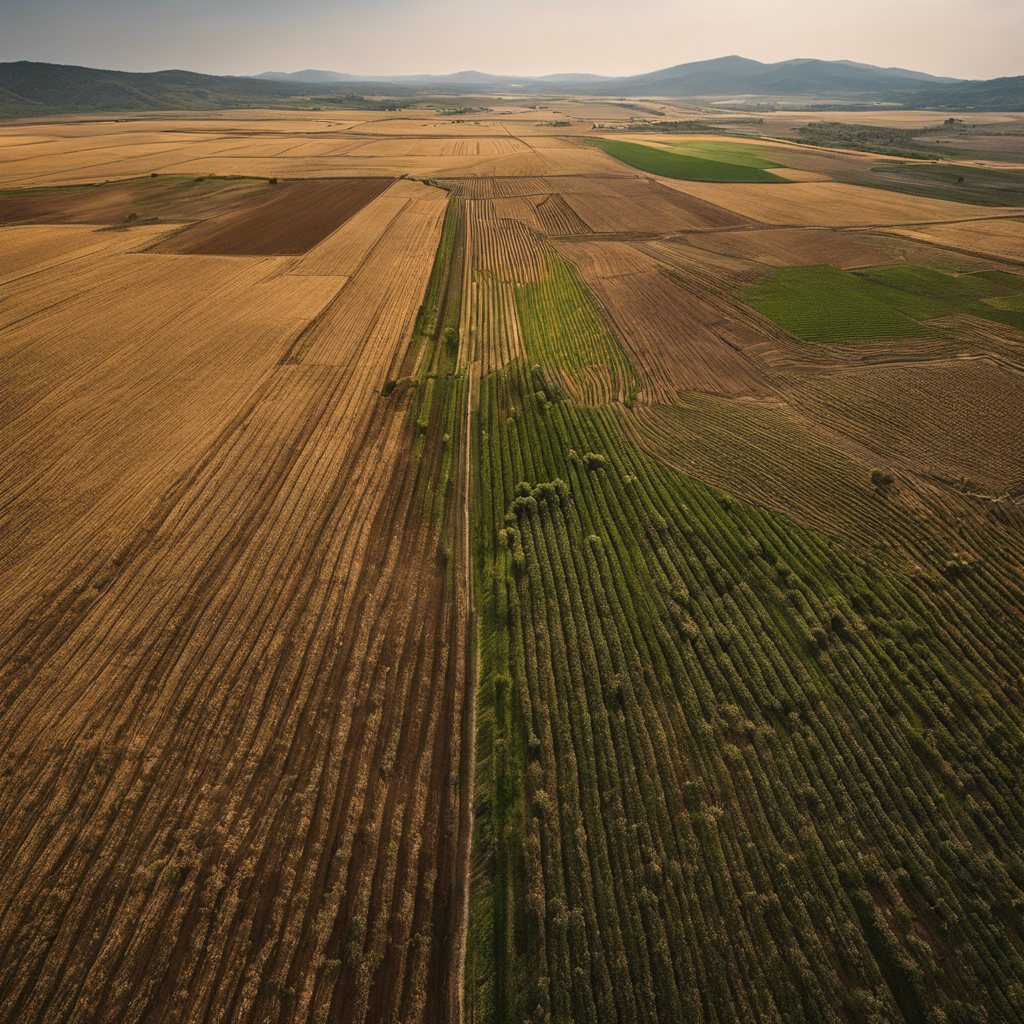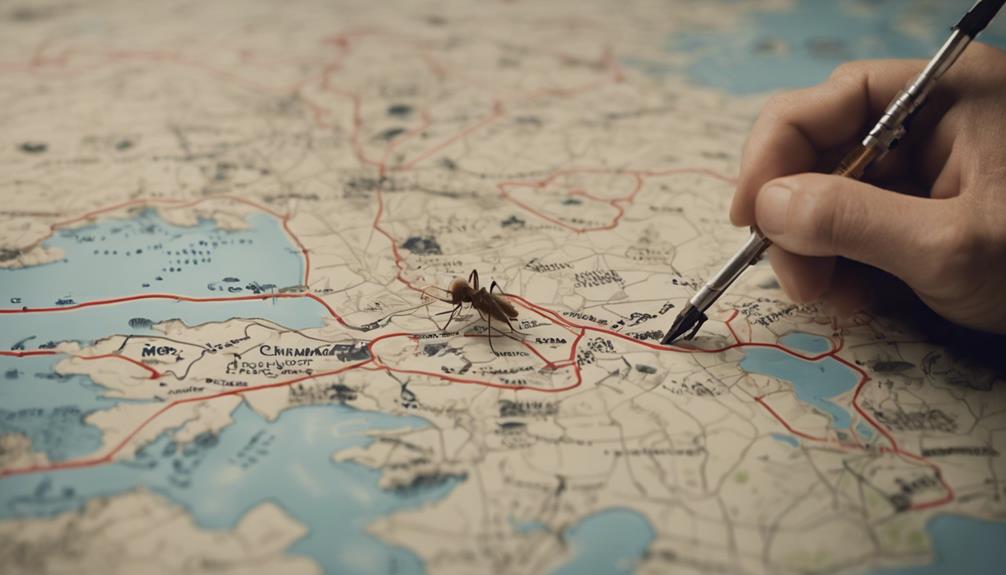Imagine walking through a lush field of crops in St George, where the sun bathes the land in a golden glow. As you marvel at the abundance of nature’s bounty, you notice a tiny trail of ants diligently marching towards a seemingly insignificant target.
Little do you know, these tiny soldiers hold the power to disrupt the delicate balance of St George’s agriculture. Ant infestations have become a pressing concern, affecting not only the crops themselves but also the livelihoods of farmers and the ecosystem as a whole.
So, what exactly is the impact of these tiny intruders on St George’s agriculture?
Key Takeaways
- Ant infestations in St George’s agriculture can result in economic losses due to crop destruction, increased production costs, reduced yields, and risks to human health and agricultural equipment.
- The absence of natural predators or competitors for invasive ants contributes to the severity of infestations, leading to decreased crop productivity and biodiversity.
- Ants can have detrimental effects on livestock health and well-being, causing discomfort, pain, and potential allergic reactions in animals, as well as indirectly affecting livestock health by farming and protecting sap-sucking pests.
- Farmers in St George’s face challenges in controlling ant infestations due to the absence of natural predators, climate conditions, and human activities, making integrated pest management approaches necessary for effective control.
Economic Losses Caused by Ant Infestations
Ant infestations in agriculture result in significant economic losses due to crop destruction, increased production costs, reduced yields, and potential risks to human health and agricultural equipment. These infestations have a detrimental impact on the agricultural industry, affecting crops such as corn, soybean, okra, and citrus.
The damage caused by ants not only leads to the loss of valuable crops but also requires additional resources to control pest populations and mitigate further destruction. This results in increased production costs, which burden farmers and decrease their profits. Furthermore, reduced yields directly contribute to the economic losses experienced in agriculture.
The negative consequences of ant infestations highlight the urgent need for effective pest control measures in order to maintain sustainable agriculture and minimize economic losses caused by these infestations.
Decreased Crop Productivity Due to Ant Damage
Crop productivity is significantly reduced as a result of the damage inflicted by ant infestations in agriculture. Ant plagues have led to widespread crop destruction, resulting in decreased crop productivity in St. George’s.
The absence of natural predators or competitors for invasive ants, combined with abundant resources, contributes to the severity of ant infestations. These ant plagues haven’t only affected crop yield but have also had significant impacts on native ecosystems and biodiversity, further exacerbating the decrease in crop productivity.
However, integrated pest management approaches, such as biological control, can help mitigate the negative impacts of ant infestations on crop productivity. Additionally, shaded crops can enhance ant services in pest control, leading to increased crop yield.
Therefore, understanding the impact of ant damage on agriculture is crucial for implementing effective strategies to mitigate the negative consequences on crop productivity in St. George’s.
Impact of Ants on Livestock Health and Well-Being
Livestock health and well-being can be significantly impacted by the presence and activities of ants. Ant infestations in agricultural areas can have detrimental effects on the health of livestock. Ant bites and stings can cause discomfort, pain, and potential allergic reactions in animals, leading to decreased productivity and overall well-being. In some cases, ant bites can even result in severe health complications or death.
Additionally, ants can indirectly affect livestock health by farming and protecting sap-sucking pests, which can lead to infestations and crop damage. It’s crucial for farmers to identify the ant species present on their farms and implement appropriate management strategies to mitigate the impact on livestock.
Furthermore, certain ant species can also serve as beneficial predators, preying on pests like caterpillars, grubs, chinch bugs, termites, and ticks, which can help control their populations and indirectly contribute to the well-being of the livestock.
Challenges Faced by Farmers in Controlling Ant Infestations
Farmers often face numerous challenges when it comes to effectively controlling ant infestations on their agricultural lands. These challenges include the absence of natural predators or competitors for the invasive ants, making it difficult to control their population.
Additionally, the availability of abundant resources such as food and nesting sites contributes to the persistence of ant infestations. Climate conditions, such as temperature and rainfall, also play a role in ant population dynamics, posing a challenge for farmers in controlling infestations.
Furthermore, human activities, such as trade and travel, facilitate the spread of invasive ants to new areas, adding to the challenges faced by farmers.
To address these challenges, farmers in St. George’s need to adopt integrated pest management approaches, including biological control and habitat restoration, to effectively control ant infestations in their agriculture.
Strategies to Prevent and Manage Ant Infestations in St George’s Agriculture
The effective prevention and management of ant infestations in St. George’s agriculture require the implementation of integrated pest control strategies, including biological control and habitat restoration, to address the challenges previously discussed. Integrated pest management approaches involve using multiple tactics to control invasive ants, such as monitoring and early detection, employing biological control agents, and restoring natural habitats to promote biodiversity. By combining these strategies, farmers can prevent the spread of invasive ants to new areas and minimize their impact on agricultural crops.
One effective strategy is the use of biological control agents, which are natural enemies of ants, such as parasitic wasps and predatory ants. These agents can be introduced into the agricultural ecosystem to target and control ant populations. Another strategy is habitat restoration, where farmers create conditions that are unfavorable for ants, such as removing potential nesting sites and providing alternative food sources.
To illustrate the different strategies for preventing and managing ant infestations in St. George’s agriculture, the following table provides a summary:
| Strategy | Description |
|---|---|
| Integrated pest management | Use a combination of tactics, including monitoring, early detection, biological control, and habitat restoration, to control invasive ants. |
| Biological control agents | Introduce natural enemies of ants, such as parasitic wasps and predatory ants, to target and control ant populations. |
| Habitat restoration | Create conditions that are unfavorable for ants, such as removing potential nesting sites and providing alternative food sources. |
| Public awareness and education | Raise awareness among farmers and the general public about the risks of unintentional introductions of invasive ants in agricultural settings. |
Frequently Asked Questions
What Are the Effects of Ant Infestation?
Ant infestations have a negative impact on agriculture. They cause crop damage, soil disturbance, economic losses, and food contamination. Effective pest control and ant species identification are crucial for mitigating these effects.
Do Ants Help Agriculture?
Ants play a vital role in agriculture by providing services such as pollination, seed dispersal, pest control, soil health, nutrient cycling, and acting as indicators of ecosystem health. They also contribute to plant defense mechanisms.
What Role Do Ants Play in the Ecosystem?
Ants’ ecological role is crucial. They benefit the ecosystem through ant pollination, seed dispersal, pest control, soil aeration, and decomposition. Their contributions support plant growth, increase crop yield, and promote a balanced ecosystem.
How Are Ants Harmful to the Environment?
Ants can be harmful to the environment in various ways. They can cause damage to crops, disrupt ecological balance, decrease species diversity, and compete for food resources. Additionally, they can disturb soil and hinder pest control measures.




